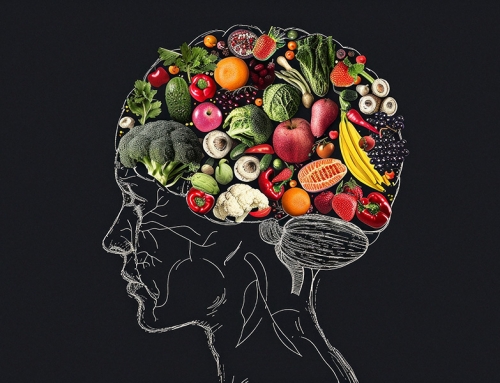FAO (The Food and Agriculture Organization of the United Nations) specifies food label as “any tag, brand, mark, pictorial or other descriptive matter, written, printed, stencilled, marked, embossed or impressed on, or attached to, a container of food or food product”. This informs the consumer about ingredients, quality and nutrition value of the food item (1). As per the population-based approach, Nutrition Labelling provides information to the consumer about the nutrient content of food which helps them to make healthy choices by making the food selection environment more conducive. The on-pack nutrition information is an important component of consumer protection as it helps them to know the country of origin of the product and whether it is safe to eat or not. It also empowers the consumer to make informed purchase decisions and adopt a healthy lifestyle (2).
A nutrition label is found either on the back of packages or the front of the pack. However, a nutrient list is usually found on the back of food packages and the front may contain symbols. The labels are of two types – Interpretive and non-interpretive. Interpretive labels consist of colours or symbols to improve understanding of the label information among consumers. Non-interpretive labels are quantitative nutrient data without any interpretation (3).
In most of high-income countries, nutritional labelling is a mandate. In the USA, all the pre-packed food must have a nutritional label. However, as per the Nutrition Labelling and Education Act of 1990 no such label is required for foods that are for immediate consumption. Nutrition labelling was first implemented in Canada in 2005 and became a mandate in 2007 (4). For European Union also, the Food Information to Consumers Regulation (EU regulation 1169, 2011) specifies that most of the pre-packaged food products must be accompanied with back of pack nutrition information (5) (6). In India, all pre-packaged food products must comply with the Food Safety and Standards (Packaging and labelling) Regulations, 2011. The Food Safety and Standards Regulation, 2011 is a notification issued by the Food Safety and Standards Authority of India under the Ministry of Health and Family Welfare (7).
Food pack labelling also acts as an effective intervention to prevent the growing burden of NCDs (Non-communicable diseases). However, there are several barriers to the proper understanding of the nutrition labels (such as diverse languages, small font and low literacy levels) which may mislead the consumer (8). Considering this and also taking into cognizance that understanding and interpreting food labels is very important to make good food choices and preparing healthy, the FSSAI (Food Safety and Standards Authority of India) initiated the Eat Right India movement to ensure safe, healthy and sustainable food for all Indians by embarking large scale effort to transform the country’s food system (9).
The following are the key points to consider while interpreting the food labels:
- Look for FSSAI logo with licence number,
- ISI mark for packaged drinking and mineral water and processed foods such as infant food, milk and skimmed milk powder,
- AGMARK for all agricultural products such as vegetable oil, pulses, cereals, spices, honey, fruits and vegetables,
- GREEN dot for vegetarian food and BROWN dot for non-vegetarian food, including egg,
- Logo for fortified food. Fortified food means where essential nutrients such as vitamins and minerals have been added to meet your daily requirement for nutrients that help you grow, fight infections, and stay strong and healthy.
- Always check the ‘Date of Manufacture’ and ‘Date of Expiry’ or ‘Best Before’ date for freshness.
- List of ingredients should be read carefully. Consumers who are sensitive to allergy causing ingredients should avoid food which contains casein in milk, tree nuts including peanuts, eggs, fish, shellfish, soybean, and proteins in wheat.
- Make sure to check artificial/permitted flavours and colours. Class I preservative are preferred over class II
- Instructions for use and storage conditions are always mentioned on the food packs.
- The nutrition facts label information is generally based on one serving/per 100gm/100 ml.
- The calories are mentioned in kilocalories per serving.
- Fat free does not mean calorie free. An item with low fat can have as many calories as full fat item. One should look for foods that are lowest in saturated fats, Trans fats and cholesterol to reduce the risk of heart diseases.
- Food items with low sodium content should be selected for controlling high blood pressure.
- Limit sugar intake specially the added sugar. Look for food that are rich in proteins, fibres, vitamins, and minerals
- A great way to help the environment, while fulfilling our food needs is by using products that can be recycled.
- Simply look for the recyclable sign on the packet before making the purchase. Consumers can look for the “Jaivik Bharat logo” if they would like to buy genuine organic food.
Food label is the tool for consumers to make informed decisions and acquire knowledge to help make health dietary choices and safeguard themselves from any allergies. Food labels can further help to address the rising prevalence of diet related NCDs. However, to benefit a greater number of individuals, it is imperative to generate awareness and educate the consumers to understand and use the labels properly.
References:
- Food Labelling [Internet]. Food and Agriculture Organization of the United Nations. [cited 2022 Nov 23]. Available from: //www.fao.org/food-labelling/en/
- Cowburn G, Stockley L. Consumer understanding and use of nutrition labelling: a systematic review. Public Health Nutrition. 2005 Feb;8(1):21–8.
- Ni Mhurchu C, Eyles H, Jiang Y, Blakely T. Do nutrition labels influence healthier food choices? Analysis of label viewing behaviour and subsequent food purchases in a labelling intervention trial. Appetite. 2018 Feb 1;121:360–5.
- Campos S, Doxey J, Hammond D. Nutrition labels on pre-packaged foods: a systematic review. Public Health Nutrition. 2011 Aug;14(8):1496–506.
- Regulation (EU) No 1169/2011 of the European Parliament and of the Council of 25 October 2011 on the provision of food information to consumers, amending Regulations (EC) No 1924/2006 and (EC) No 1925/2006 of the European Parliament and of the Council, and repealing Commission Directive 87/250/EEC, Council Directive 90/496/EEC, Commission Directive 1999/10/EC, Directive 2000/13/EC of the European Parliament and of the Council, Commission Directives 2002/67/EC and 2008/5/EC and Commission Regulation (EC) No 608/2004 Text with EEA relevance [Internet]. OJ L Oct 25, 2011. Available from: //data.europa.eu/eli/reg/2011/1169/oj/eng
- The European Banking Union : A Compendium [Internet]. Nomos Verlagsgesellschaft; 2015 [cited 2022 Nov 23]. Available from: //www.bloomsburycollections.com/book/the-european-banking-union-a-compendium
- Compendium_Labelling_Display_30_06_2022.pdf [Internet]. [cited 2022 Nov 23]. Available from: //www.fssai.gov.in/upload/uploadfiles/files/Compendium_Labelling_Display_30_06_2022.pdf
- Bhattacharya S, Saleem SM, Bera OP. Prevention of childhood obesity through appropriate food labeling. Clin Nutr ESPEN. 2022 Feb;47:418–21.
- Eat Right India [Internet]. [cited 2022 Nov 23]. Available from: //eatrightindia.gov.in/how-to-read-label.jsp
Affiliation:
- Dean and Distinguished University Professor at School of Public Health, University of Memphis, TN, USA
- Foundation of Healthcare Technologies Society, New Delhi, India






Leave A Comment